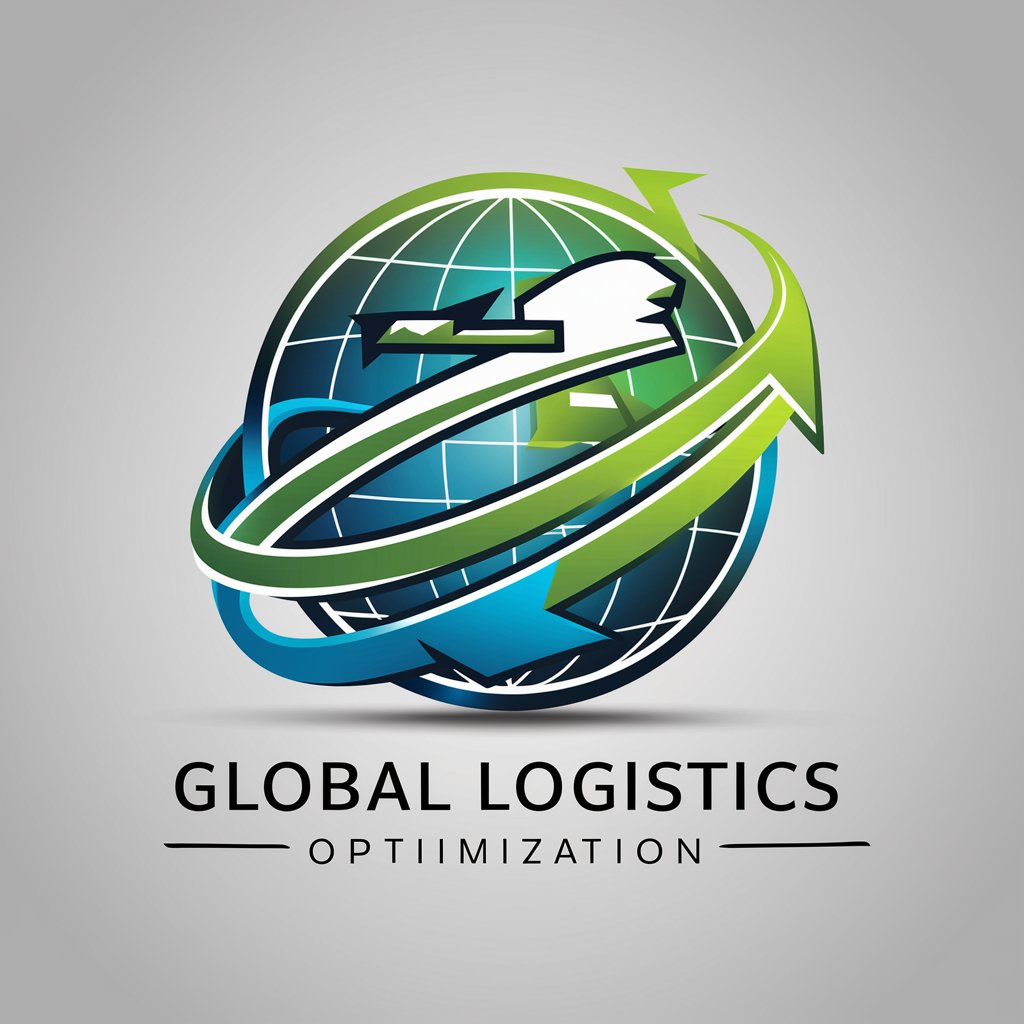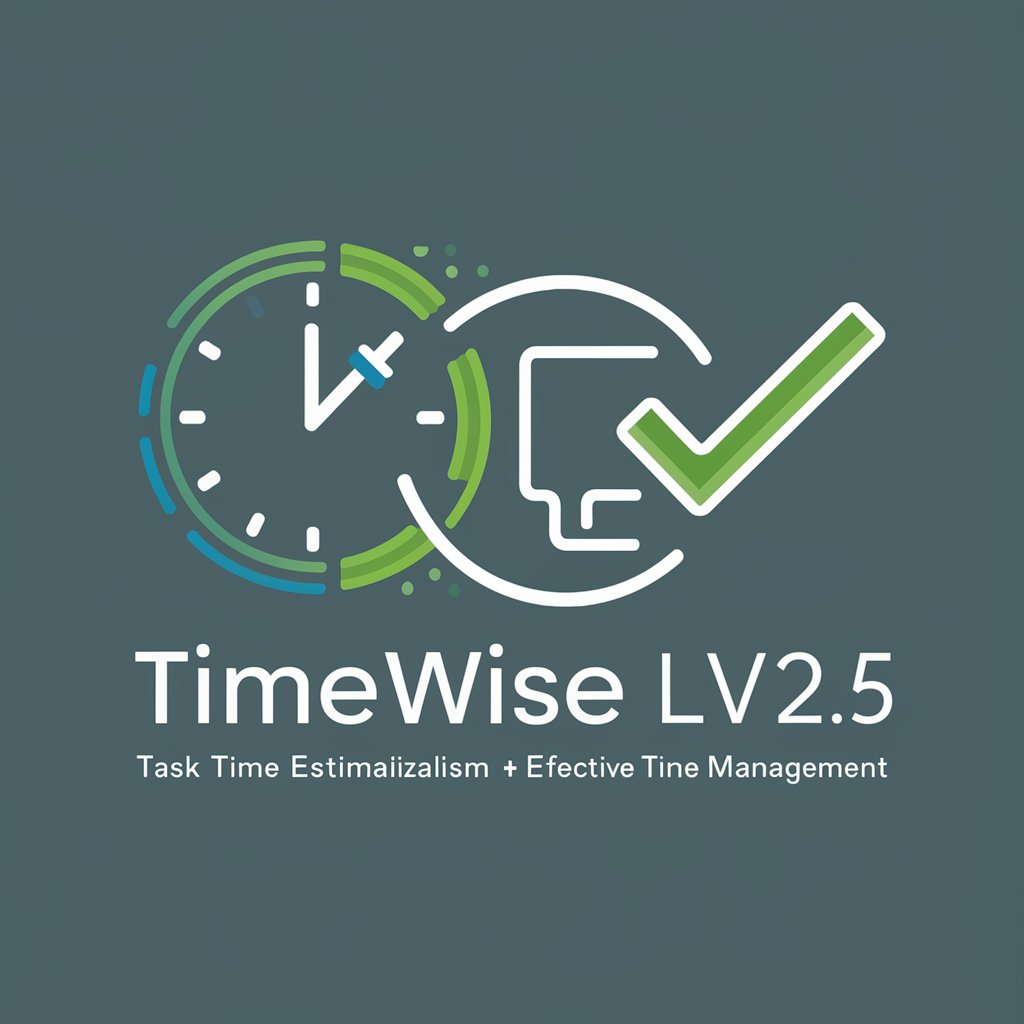Global Logistics Optimization - Supply Chain AI Assistant

Welcome! Let's optimize your logistics for efficiency and sustainability.
Optimizing Logistics with AI Power
How can I reduce carbon emissions in my supply chain?
What strategies can help in optimizing inventory levels?
What are the best practices for managing supply chain risks?
How can I improve demand planning for seasonal products?
Get Embed Code
Introduction to Global Logistics Optimization
Global Logistics Optimization is designed as a comprehensive tool aimed at enhancing the efficiency and sustainability of global supply chains. Its core objective is to analyze, recommend, and implement strategies that improve logistics operations across various facets, including cost reduction, carbon emissions minimization, demand planning, inventory optimization, risk management, and decision support. The essence of this tool lies in its ability to provide personalized advice tailored to the unique challenges and dynamics of each supply chain. Through leveraging advanced analytics, real-time data, and a deep understanding of global logistics dynamics, it assists businesses and individuals in making informed decisions and adopting effective strategies for a more efficient and eco-friendly supply chain. For example, in a scenario where a multinational corporation faces frequent stockouts in its overseas markets, Global Logistics Optimization could analyze demand patterns, evaluate supply chain vulnerabilities, and recommend adjustments to inventory levels or reorder points, thus minimizing stockouts and reducing excess inventory costs. Powered by ChatGPT-4o。

Main Functions of Global Logistics Optimization
Supply Chain Analysis
Example
Evaluating a company's supply chain to identify bottlenecks and inefficiencies.
Scenario
For a company struggling with delayed shipments, a thorough supply chain analysis could uncover inefficient routing or supplier issues, leading to strategic changes that improve timeliness and reduce costs.
Cost Reduction Strategies
Example
Identifying ways to reduce logistics-related expenses without compromising service quality.
Scenario
Implementing bulk shipping or renegotiating supplier contracts for a business looking to cut shipping costs, resulting in significant savings.
Carbon Emissions Minimization
Example
Advising on eco-friendly logistics practices and technologies.
Scenario
For a company aiming to achieve sustainability goals, suggestions might include optimizing routes to reduce fuel consumption or shifting to greener transportation modes, thus lowering the carbon footprint.
Demand Planning
Example
Forecasting demand to adjust inventory levels accordingly.
Scenario
Utilizing predictive analytics for a retail chain to better anticipate seasonal demand, ensuring optimal stock levels and reducing overstock or stockout situations.
Inventory Optimization
Example
Balancing stock levels to meet demand without overstocking.
Scenario
Applying just-in-time inventory strategies for a manufacturer to minimize storage costs and reduce waste, while still meeting customer demand efficiently.
Risk Management
Example
Identifying and mitigating risks in the supply chain.
Scenario
Conducting a risk assessment for a company operating in multiple countries to prepare for potential disruptions, such as natural disasters or political instability, by diversifying suppliers or creating contingency plans.
Decision Support
Example
Providing data-driven insights and recommendations for strategic decision-making.
Scenario
Offering scenario planning tools and analytics for a logistics firm to evaluate the impact of opening a new distribution center, aiding in the decision-making process.
Ideal Users of Global Logistics Optimization Services
Multinational Corporations
These entities often deal with complex, multi-tiered supply chains that span several countries. They benefit from Global Logistics Optimization by achieving greater efficiency, reducing costs, and meeting sustainability targets through improved supply chain management.
Small and Medium-Sized Enterprises (SMEs)
SMEs, looking to expand their market reach and operational scale, can leverage the tool to streamline operations, optimize logistics costs, and compete more effectively with larger players.
Sustainability-Focused Companies
Businesses committed to reducing their environmental impact can utilize the tool's capabilities in minimizing carbon emissions and adopting greener logistics practices, aligning their operations with sustainability goals.
Supply Chain Consultants
Professionals offering advisory services in supply chain management can employ Global Logistics Optimization as a powerful analytical tool to provide clients with data-driven insights and strategic recommendations.

How to Utilize Global Logistics Optimization
Begin Your Journey
Start by visiting yeschat.ai to engage with Global Logistics Optimization without the need for signing in or subscribing to premium services.
Define Your Objectives
Clarify your goals for supply chain optimization, including cost reduction, sustainability efforts, risk management, and inventory efficiency.
Input Your Data
Provide specific details about your supply chain, such as inventory levels, supplier information, transportation methods, and demand forecasts.
Analyze Recommendations
Use the tool's insights and recommendations to identify areas for improvement, focusing on actionable advice tailored to your objectives.
Implement and Monitor
Apply the suggested strategies and continuously monitor their impact, making adjustments as necessary to optimize performance over time.
Try other advanced and practical GPTs
React Native GPT
Empowering React Native Development with AI

She Did It All With Six
Empowering mothers through AI-driven guidance.

Viabilidade do Negócio, Ideia ou Hobby - Dr. Guita
Powering Your Business Potential with AI

Post Impressionador - Sr. Edin
Empowering your LinkedIn narratives with AI.

Henry F. Mentor
Empowering Entrepreneurs with AI-Powered Ford Wisdom

⏱️ TimeWise lv2.5
Master Time Management with AI

Resume Tailor
Transform Your Resume with AI

The Rapper Code
Code like a Rapper with AI!

1 Page Marketing Plan
Simplify Your Marketing with AI

Super Speedy Imports Assistant
Streamline your imports with AI-powered PHP functions.

On Point GPT
Precision at your fingertips - AI-powered clarity and accuracy.

Job Application Coach
Empowering your job applications with AI.

Frequently Asked Questions about Global Logistics Optimization
What sets Global Logistics Optimization apart from other logistics tools?
Our AI-powered tool uniquely combines real-time data analysis, sustainability considerations, and comprehensive supply chain optimization strategies to deliver personalized recommendations.
Can Global Logistics Optimization help reduce carbon emissions in my supply chain?
Absolutely. By analyzing transportation methods, supply chain design, and packaging options, it offers strategies to minimize carbon footprints and promote eco-friendly operations.
How does the tool handle unexpected supply chain disruptions?
It employs predictive analytics to foresee potential disruptions and suggests resilient and flexible strategies for risk management and rapid response.
Is Global Logistics Optimization suitable for small businesses?
Yes, it is designed to scale, offering solutions that cater to the unique challenges and opportunities of both small businesses and large enterprises.
How often should I use this tool for optimal results?
Regular use is recommended. Continuous monitoring and adjusting based on the tool's analytics and forecasts can lead to sustained improvements and efficiencies.
